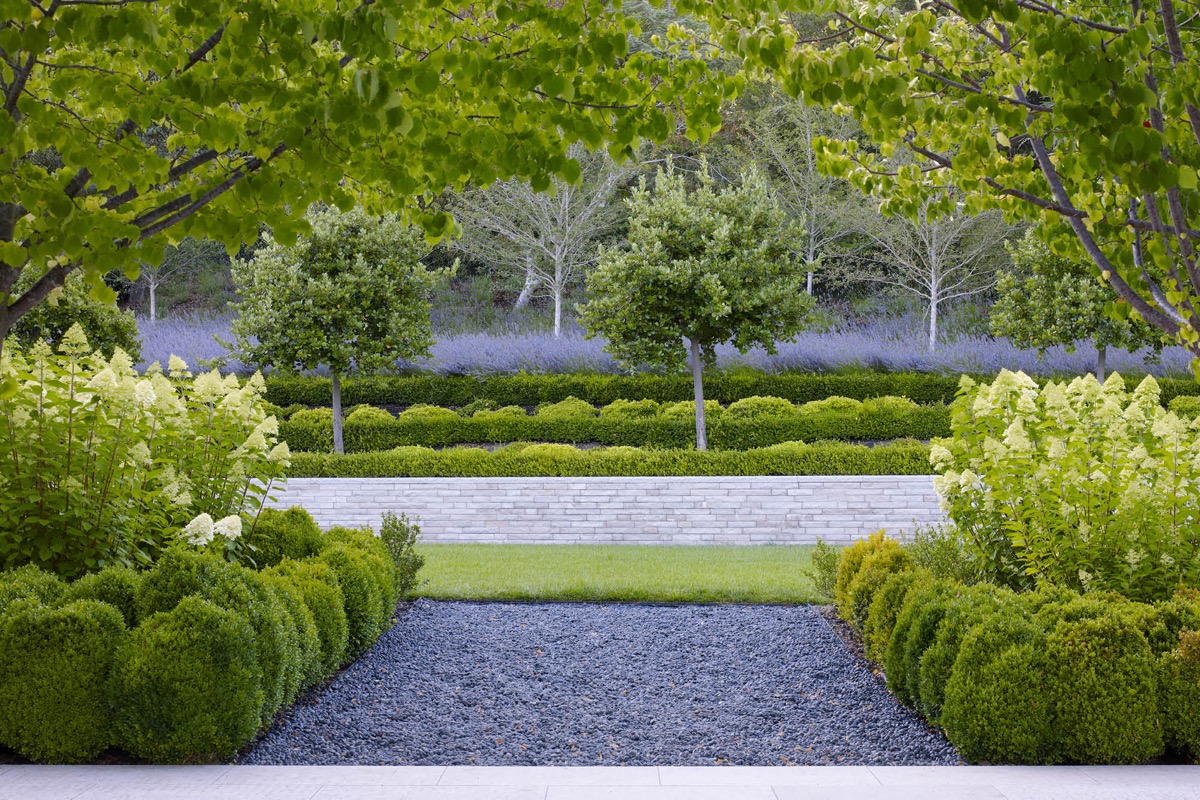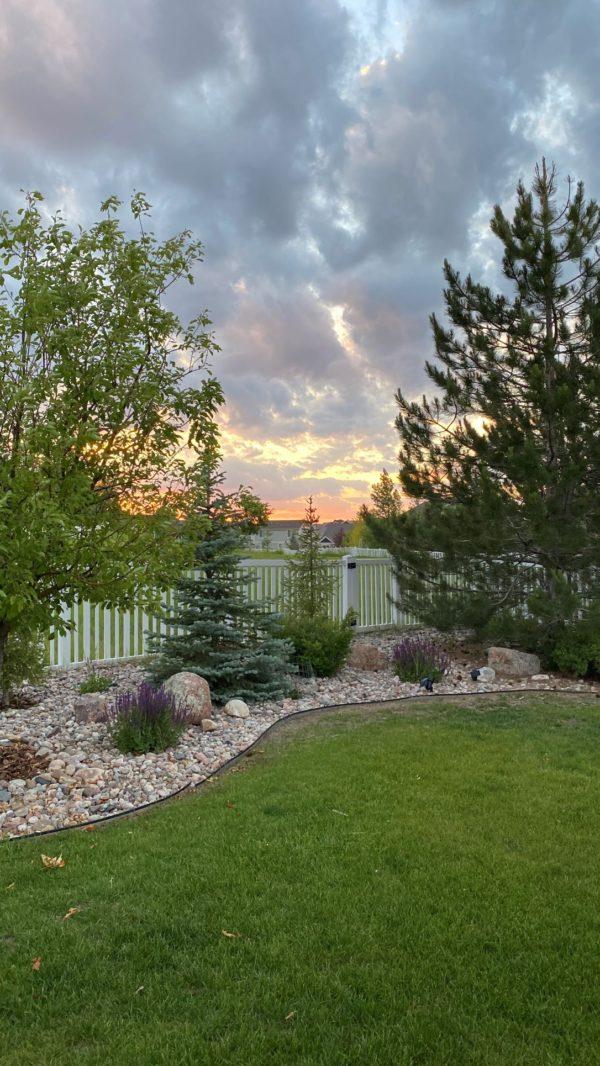Discovering Different Sorts Of Landscape Design to Improve Your Outdoor Environment
Landscaping plays a crucial role in specifying exterior rooms. Different designs, from traditional yards to contemporary minimal layouts, use distinctive advantages for improving appearances and function. Integrating aspects like xeriscaping and indigenous plants can add to environmental balance. Recognizing the interaction of hardscape and softscape is necessary for creating welcoming environments. The options readily available can be frustrating, triggering one to assess which style finest straightens with their vision for an outside haven.
Conventional Garden Landscaping
:max_bytes(150000):strip_icc()/GettyImages-154046398-c39f1daf45a84601b328d78ed8630660.jpg)
While numerous modern yards embrace minimalism and indigenous plantings, typical garden landscape design stays a cherished strategy that highlights proportion, structure, and ornamental functions. This style usually integrates official geometric formats, where pathways, flowerbeds, and hedges are arranged with accuracy. Central centerpieces, such as water fountains or sculptures, draw the eye and give a feeling of harmony.Traditional landscaping regularly consists of a variety of plant types, showcasing seasonal blooms and evergreen elements. Classic bushes, perennials, and annuals produce vivid colors and structures throughout the year. Additionally, pergolas, arches, and trellises include vertical passion and act as support for climbing plants, enhancing the overall aesthetic.The use all-natural materials, such as rock and timber, more improves the standard landscape, contributing to a timeless top quality. Eventually, this style invites relaxation and satisfaction, making it a precious choice for those looking for an attractive outside atmosphere.
Modern Minimalist Landscape Design
Modern minimal landscape design emphasizes simpleness and capability, defined by clean lines and open rooms. Trick attributes include a limited plant palette and thoughtful hardscape layout that focuses on functionality and aesthetic charm. Reliable plant selection techniques better improve the minimalist method, producing peaceful outdoor atmospheres that motivate relaxation and contemplation.
Secret Qualities of Minimalism
A growing fad in landscaping is the welcome of minimalism, characterized by simpleness and performance. Minimal landscaping focuses on clean lines, open rooms, and a limited shade palette, advertising a feeling of tranquility. Elements are thoroughly curated to avoid mess, allowing each element to stand out. Using all-natural products, such as stone and timber, improves the organic feeling while keeping an aesthetic equilibrium. In addition, minimal layouts typically incorporate geometric shapes, which can create aesthetic passion without frustrating the senses. Water functions may be included, acting as centerpieces that boost serenity. In general, minimalism in landscape design emphasizes the charm of restraint, permitting nature's inherent qualities to radiate through in an unified outdoor atmosphere.
Plant Selection Approaches
Effective plant option is important for attaining the preferred aesthetic in modern minimalist landscape design. The focus must be on simplicity, utilizing a restricted scheme of plants that complement each other and the surrounding atmosphere. Native plants are usually suitable, as they require less maintenance and water, advertising sustainability. Selecting species with varying heights and textures can add aesthetic passion without frustrating the space. Grouping plants in collections rather than scattering them enhances communication and enhances the minimalist motif. Evergreen varieties can provide year-round framework, while seasonal blossoms introduce subtle shade changes. Eventually, the goal is to produce a calm exterior room that embodies tranquility and consistency via thoughtful plant options.
Hardscape Design Concepts
Crucial components in hardscape layout substantially add to the general aesthetic appeals and functionality of minimal landscaping. This design approach stresses clean lines and underrated products, creating a minimalist visual experience. Secret parts consist of paths, patio areas, and keeping wall surfaces, which not only define spaces yet likewise boost access and use. Using products such as concrete, rock, and timber is widespread, showing an all-natural yet modern visual. Incorporating symmetrical layouts and geometric shapes additionally enhances the minimal viewpoint, enabling a harmonious mix with surrounding plant. In addition, proper water drainage and erosion control are vital factors to consider, making sure longevity and sustainability. Ultimately, effective hardscape design works as a structure that enhances softscape elements while preserving equilibrium and simpleness in exterior atmospheres.
Cottage-Style Landscape design
Cottage-style landscape design uses a delightful strategy to creating inviting outside rooms. By integrating enchanting plant mixes, this style fosters a feeling of heat and whimsy. The focus on cozy, well-defined locations encourages relaxation and pleasure of nature.
Enchanting Plant Mixes
Although numerous homeowners look for to produce a picturesque outside area, attaining the appeal of cottage-style landscape design usually pivots on thoughtful plant mixes. Vibrant flowers, lush vegetation, and fragrant natural herbs can be skillfully paired to stimulate a feeling of fancifulness and fond memories. For example, combining lavender, sissies, and foxgloves develops a vibrant tapestry that attracts pollinators while giving a delightful scent. Including decorative turfs like miscanthus can add structure and activity, complementing the softer flowers. Furthermore, blending seasonal and yearly plants guarantees continual color throughout the seasons. Making use of climbers, such as clematis or honeysuckle, can boost upright passion. In general, these mixes not just enhance the landscape but likewise foster a charming and welcoming atmosphere.

Comfy Outdoor Spaces
Developing comfy outside areas requires a careful blend of comfort and charm, complementing the lively plant combinations found in cottage-style landscape design - Landscape Lighting Installer. These locations often feature inviting seating plans, such as weathered wooden benches or supported chairs bordered by lavish greenery. Soft lights, like fairy lights or lanterns, includes heat, transforming the space into a tranquil hideaway. Integrating aspects such as trellises adorned with climbing roses or fragrant natural herbs enhances sensory experiences. Additionally, paths made of rustic rocks welcome exploration and link with nature. Ornamental touches like birdbaths or wayward yard art add to a sense of fancifulness. Eventually, the goal is to develop an enchanting atmosphere that urges relaxation and go now pleasure of the charm surrounding these relaxing outdoor havens
Xeriscaping for Water Preservation
Exactly how can communities balance visual landscape design with the pressing demand for water conservation? Xeriscaping arises as a viable option, advertising sustainable techniques that reduce water use while enhancing outdoor elegance. This landscape design method focuses on using drought-resistant plants indigenous to the area, which need significantly much less water than traditional yards. By incorporating mulch and reliable irrigation systems, xeriscaping reduces evaporation and runoff, additional conserving valuable water resources.Communities can produce aesthetically attractive landscapes via cautious preparation, selecting a diverse variety of structures and shades that thrive in dry problems. Furthermore, xeriscaping motivates making use of ornamental rocks and attractive gravel, offering appealing and useful alternatives to lawn lawns. As areas embrace this environmentally friendly approach, they not only lower their water usage yet also advertise biodiversity and durability in their regional ecological communities. Ultimately, xeriscaping functions as a demonstration of the consistency in between aesthetic charm and ecological obligation.
Hardscape Layout Aspects
Hardscape layout aspects play a necessary role in improving outside spaces by giving structure and capability. These non-plant features, such as patio areas, sidewalks, wall surfaces, and decks, develop aesthetic interest while serving practical functions. Using materials like block, concrete, and stone, hardscaping contributes to the total visual allure and durability of a landscape.Incorporating hardscape elements can define locations within a yard, leading movement and motivating social communication. A well-placed pathway can attach different areas of the garden, while keeping walls can take care of altitude changes and avoid erosion.Furthermore, hardscape layout can boost access and security, providing secure surfaces for lounging or walking. Reliable combination of hardscape components complements soft landscape design, ensuring a balanced outside environment. Ultimately, thoughtful hardscape design boosts not only the elegance of exterior areas but also their functionality, making them a lot more welcoming and functional for site visitors and homeowners alike.
Outdoor Living Areas
While exterior living areas offer a smooth mix of comfort and nature, they offer as necessary expansions of a home, improving way of living and recreation. These locations can consist of outdoor patios, decks, or outdoor cooking areas, developed to cultivate leisure and entertainment. Bbq Island Installation. By including practical furnishings and elegant decoration, property owners create inviting ambiences for events or peaceful evenings.The integration of color frameworks, such as pergolas or awnings, secures against the elements while maintaining an open feel. Fire pits and outdoor heating units extend usability right into cooler months, supplying warmth and setting. Additionally, incorporating illumination attributes enhances the room's usability after sunset, creating an enchanting night atmosphere.Landscaping components, such as borders and paths, additionally specify these locations, assisting activity and adding visual allure. Ultimately, exterior living rooms change yards right into versatile hideaways, promoting a way of living that welcomes both nature and comfort
Native Plant Landscaping
Indigenous plant landscape design highlights using indigenous plants to develop unified and lasting outside environments. This strategy not only improves biodiversity yet likewise preserves water and lowers the requirement for chemical fertilizers and pesticides. By choosing plants that are belonging to a details region, homeowners can ensure that their landscapes are well-adapted to neighborhood dirt and environment problems, resulting in lower maintenance requirements.Additionally, native plants offer important habitats for neighborhood wildlife, consisting of bees, birds, and butterflies, advertising ecological health and wellness. Landscape creates that incorporate these plants frequently feature naturalistic layouts that resemble regional ecosystems, cultivating a local color and link to the environment.Furthermore, indigenous plant landscape design can add to dirt stability and disintegration control, making it an eco responsible option. On the whole, this technique not only improves outside rooms but likewise supports the local environment, producing a lasting equilibrium between human activity and nature.

Often Asked Inquiries
Just How Can I Select the Right Landscape Design Design for My Home?
Selecting the best landscaping design for a have a peek at this website home includes examining the building's style, climate, and individual choices. Grill Islands. Researching various designs and getting in touch with specialists can give guidance to produce an unified exterior area tailored to specific demands
What Is the Typical Expense of Specialist Landscape Design Providers?
The typical price of expert landscaping solutions commonly varies from $1,000 to $5,000, relying on task intricacy, dimension, and location. Homeowners should consider obtaining multiple quotes to ensure they obtain reasonable prices and top quality service.
Exactly how Often Should I Preserve My Landscaped Lawn?
The regularity of keeping a landscaped lawn usually depends on the plants and features existing. Generally, routine maintenance every couple of weeks is suggested, with seasonal tasks enhancing in regularity throughout peak growing periods for perfect health and wellness and looks.
Exist Landscaping Options for Tiny Urban Spaces?

Different landscape design choices exist for tiny city spaces, including vertical gardens, container plants, and rooftop yards. Integrating these components can optimize limited areas while offering plant, enhancing aesthetics, and improving air top quality in metropolitan atmospheres.
What Plant kingdom Are Ideal for Bring In Regional Wildlife?
The most effective plants for bring in local wildlife consist of indigenous flowering types, berry-producing hedges, this post and varied yards. These plants supply important food and habitat, cultivating a thriving ecosystem that sustains different birds, insects, and small animals. Numerous home owners look for to produce a picturesque outside space, achieving the appeal of cottage-style landscaping typically hinges on thoughtful plant mixes. Producing cozy outside spaces calls for a careful mix of convenience and appeal, matching the vibrant plant mixes discovered in cottage-style landscape design. Indigenous plant landscape design stresses the usage of native vegetation to produce unified and sustainable exterior atmospheres. Landscape develops that include these plants commonly include naturalistic designs that simulate regional communities, fostering a feeling of place and link to the environment.Furthermore, native plant landscaping can contribute to dirt security and disintegration control, making it an ecologically accountable choice. Various landscape design alternatives exist for small metropolitan spaces, consisting of upright yards, container plants, and rooftop gardens.